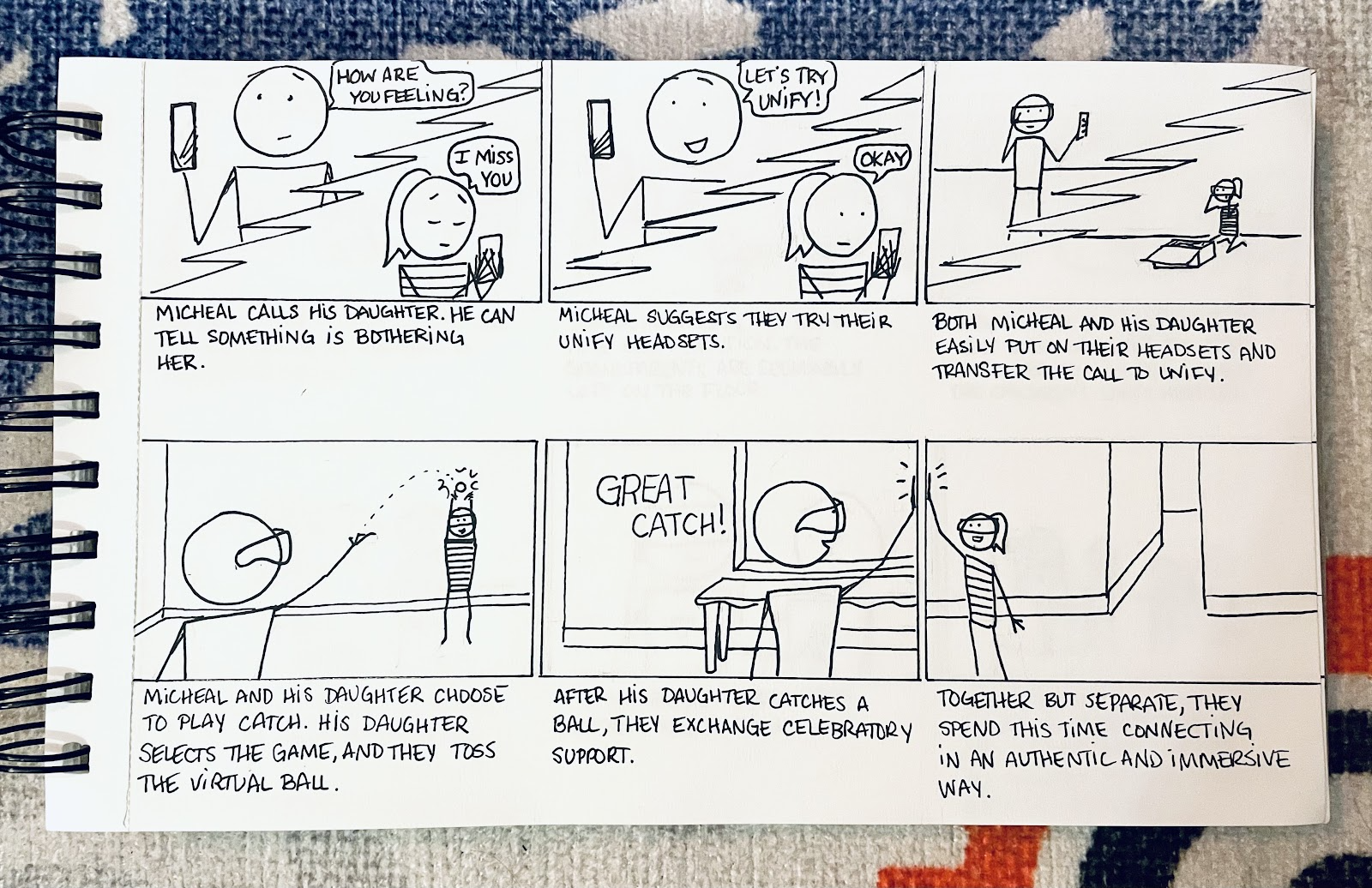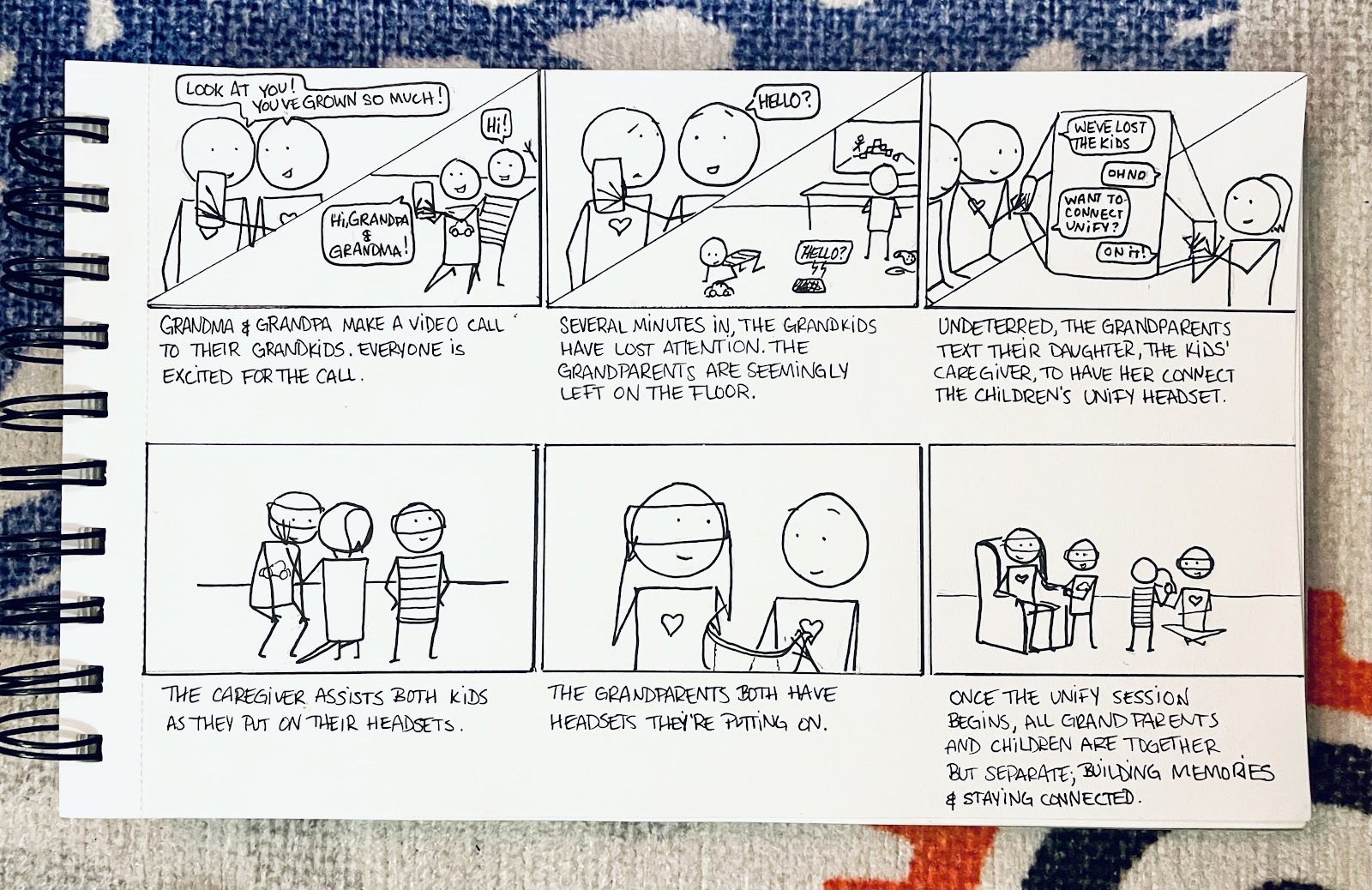Ideate
Storyboards
A storyboard is what it sounds like, a sequence of illustrations and text that describe a story or scenario.
We used storyboards to clarify use scenarios and help further refine our product.
After creating design goals and requirements, the next step was to imagine use cases. We talked about the situations in which our two personas might use our product, as well as other personas not fully formed such as a military family separated due to deployment, a student who have left home, a hospitalized individual, and an individual in a senior living community unable to receive visitors.
In the end our storyboards explored the persona Michael and his child, another child and parent physically separated, a student away from home and friends connecting. Down below are two of our main storyboards that we selected to be the guiding points for the remainder of our design process as well as our design requirements.


Requirements & Goals
Our design proposal, which includes a list of requirements and goals, is an outline of how are design solution should be implemented and address our users’ needs.
This overall provided a clear purpose and structure for our design and would assist our later processes in prototyping and developing a more polished product.
The design proposal is built upon a combination of all of our research processes and storyboards as we begin to define our solution before beginning our ideation, which will be further elaborated upon in our prototypes and next steps.
Unify’s Design Goals
Facilitates organic and authentic connection during and after the session experience. It helps create and maintain emotional connections between physically separated loved ones.
Reduces anxiety and awkwardness around long-distance communication due to physical separation.
Encourages engagement through immersive experiences leaving users with a feeling of deep connection.
Unify Design Requirements:
- Should include multiple modes of communication
- Should be intuitive and easy to use by non-technical users
- Should be accessible for users of all abilities
- Should support multiple users (3+)
- Should be safe for children
- Should work with existing technology
- Should be portable
- Should be durable
- Should support multiple languages
- Should be affordable for families and individuals of low to average income
